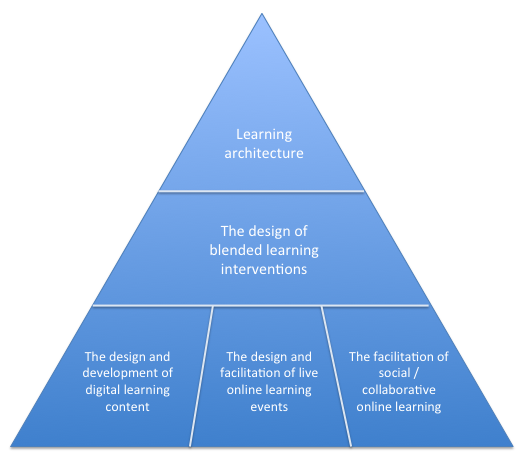Learning content can be distributed online in a number of formats. Let’s compare them …
Native document: By this we mean the output format of a proprietary application, most commonly Word, Excel or PowerPoint. These applications have sophisticated editing and formatting capabilities, but were never really designed as a means for distributing finished content. The consumer has to have their own copy of the application that was used to prepare the original document and often in a particular version. The documents can be bulky to download because their file formats are not optimised for online use. They are slow to display, because the application has first to be loaded into memory. Perhaps most annoyingly, it is all too easy for multiple versions to be in circulation at any one time. There will be exceptional circumstances where the native document format must be maintained, perhaps because learners will be required to edit the documents, perhaps because the functionality of the native format is critical (you could be using Excel as the platform for a simulation), but more often than not, you will be better off using one of the other formats below.
PDF: This is the Portable Document Format as developed in 1994 by Adobe, but now an open standard. It’s original purpose was to get round the problem of users having to have their own copies of the applications and typefaces used by writers and designers to prepare documents and artwork. When you consider the cost of office applications, let alone sophisticated desktop publishing and graphics software, you can see why this format has proved so valuable. Having said this, PDF was never originally conceived as a format for online distribution. Where it really scores is that it preserves all the formatting of the original document, which is important when you have applied a lot of expertise to the design. Most importantly, by staying faithful to the original, this allows for highly professional-looking print-outs. To view a PDF file, users require only the free Adobe Reader. To create PDF files, it used to be necessary to own a copy of Adobe Acrobat Professional, but now many applications, including those in the Microsoft Office suite, have a built-in facility to save to PDF. As of 2011, some 150 million PDF documents were available online on the World Wide Web.
HTML: It is with Hypertext Mark-up Language that all web pages are formatted. While the format has been extended enormously over the years, and a great deal of programming capability has been integrated (using JavaScript), it still works in much the same way that Tim Berners-Lee first designed it. Because HTML resides within the public domain and can be used freely by anyone, it has been widely adopted as a standard on just about every computing device that accesses the internet. While HTML has many capabilities, it has not until recently had much functionality to offer in terms of animation, audio and video, a gap that has been filled largely by Adobe Flash. However, the next generation of HTML, version 5, promises to remedy these deficiencies and could eventually lead to the demise of Flash.
Flash: Flash was developed originally as an animation tool called FutureSplash Animator. It was acquired by Macromedia in 1996 and by Adobe in 2005. Flash grew in popularity as a way to provide sophisticated animation and multimedia facilities on the World Wide Web and has proved particularly popular for games, adverts and e-learning. Flash files, or ‘movies,’ can be created using Adobe’s own Flash Professional application, or by any number of e-learning authoring tools. The movies are then integrated into HTML pages for viewing online by any user who has the Flash plug-in installed (which is just about everyone). While not as versatile as pure HTML for everyday internet use, Flash excels where sophisticated multimedia and interactivity are critical. This would explain why the overwhelming majority of e-learning materials are distributed in this format. The future of Flash is currently in question, largely because of the refusal of Apple to allow Flash on its iPhone and iPad. With a future that looks increasingly mobile, many e-learning authoring tool vendors are looking more closely at HTML5.
| Use |
When |
| Native documents |
You want users to be able to edit the documents
You want to preserve some unique functionality of the native format, e.g. modelling in Excel |
| PDF |
You expect users to print the content
You need to preserve the exact look of the original document |
| HTML |
You want to provide the easiest possible access to your content
You want to be able to edit the content easily |
| Flash |
Your content is multimedia-rich
Your content incorporates interactivity that is not easily achievable in HTML |
Part 1
Coming in part 3: Choosing a platform for your content
First published in Inside Learning Technologies, December 2011
![]()

